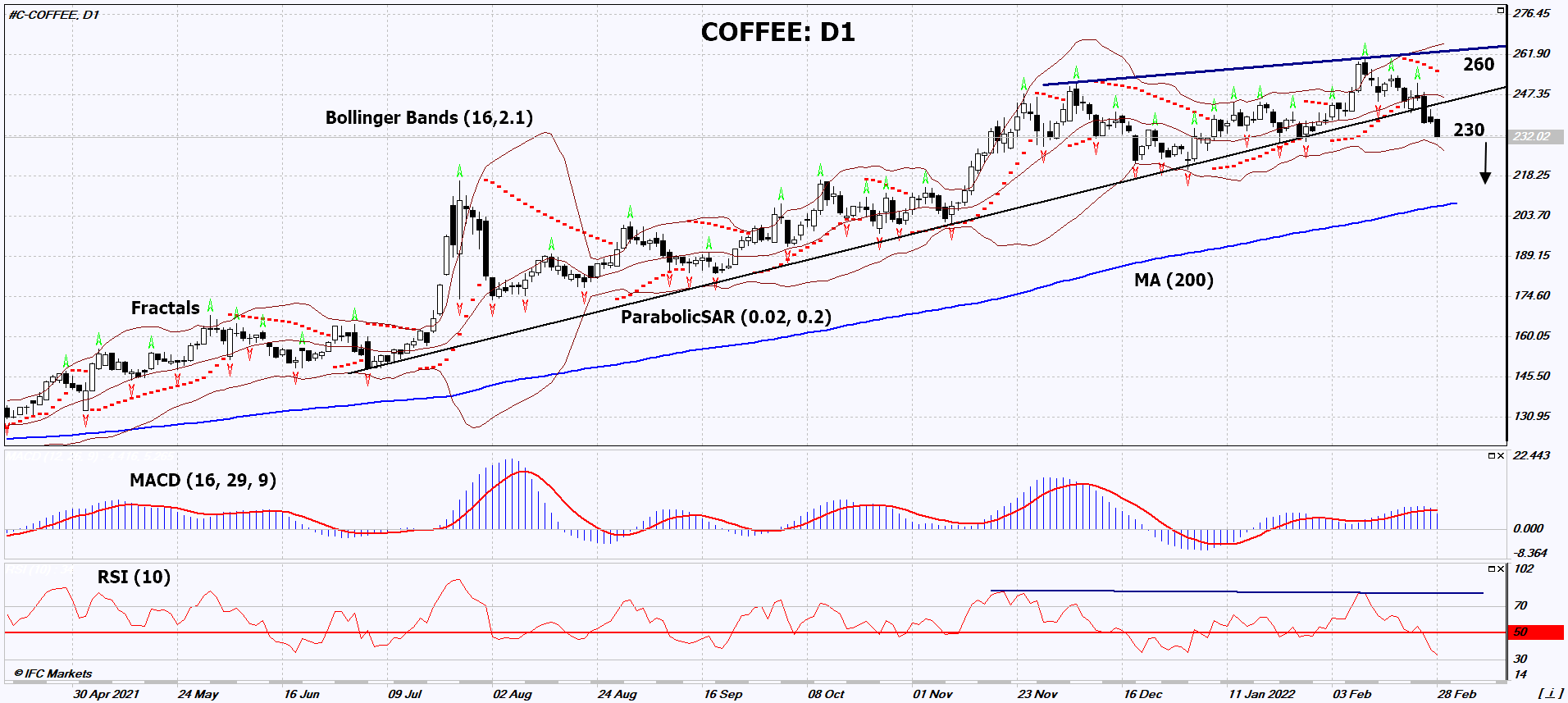COFFEE Technical Analysis Summary
Sell Stop։ Below 230
Stop Loss: Above 260
| RSI | Sell |
|---|---|
| MACD | Sell |
| MA(200) | Neutral |
| Fractals | Neutral |
| Parabolic SAR | Sell |
| On Balance Volume | Neutral |
COFFEE Chart Analysis
COFFEE Technical Analysis
On the daily timeframe, COFFEE: D1 has broken down the uptrend support line. A number of technical analysis indicators formed signals for further decline. We do not rule out a bearish movement if COFFEE: D1 drops below the last 3 lower fractals and the lower Bollinger band: 230. This level can be used as an entry point. The initial risk limit may be higher than the high since September 2011, the last 3 upper fractals and the Parabolic signal: 260. After opening a pending order, we move the stop following the Bollinger and Parabolic signals to the next fractal high. Thus, we change the potential profit/loss ratio in our favor. The most cautious traders after making a trade can switch to a four-hour chart and set a stop loss, moving it in the direction of movement. If the price overcomes the stop level (260) without activating the order (230), it is recommended to delete the order: there are internal changes in the market that were not taken into account.
Fundamental Analysis of Commodities - COFFEE
Coffee and cocoa are getting cheaper amid the aggravation of the political situation in Ukraine. Will the COFFEE quotes continue to decline?
Market participants fear a reduction in attendance at cafes and restaurants due to sanctions. They can cause a deterioration in the economic situation in Europe, as well as in neighboring countries. In turn, this can negatively affect the global demand for coffee. Recall that according to the forecast of the United States Department of Agriculture (USDA), in the agricultural season 2021/2022, it should have increased by 1.5 million bags (60 kg) compared to the previous season and amounted to 164.9 million bags. Moreover, it was assumed that the main increase in world demand will be provided by the European Union, as well as the United States and Brazil. According to the International Coffee Organization, Europe is the world’s largest consumer of coffee. Its share is about a third of world consumption. In 2nd place are the countries of the Asia-Pacific region (Asia & Oceania) and in 3rd place - North America. Note that the shares of the American chain of coffee houses Starbucks have fallen in price by 21% since the beginning of this year. That’s more than the 9% drop in the S&P 500 over the same period. An additional negative factor for Arabica coffee could be the strengthening of the Brazilian real against the US dollar. Since May last year, it has amounted to almost 12%.
